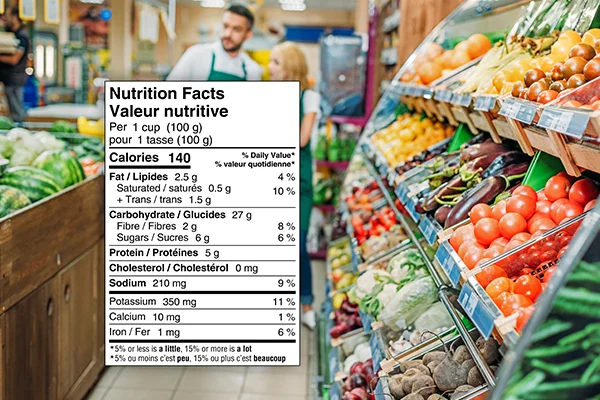The accuracy of nutrition facts labels has been debated among nutritionists, researchers, and consumers alike, especially in today’s increasing health consciousness.
Summary
- The FDA allows a variance of up to 20% for nutrients like vitamins and minerals.
- The CFIA requires accuracy within 20% of label values.
Understanding the Purpose of Nutrition Labels

Nutrition labels are designed to provide consumers with detailed information about the nutritional content of food products. These labels typically include data on calories, macronutrients (such as fats, proteins, and carbohydrates), vitamins, minerals, and sometimes additional components like fibre and sugars. The goal is to help individuals monitor their nutrient intake and make healthier food choices. But how reliable is this information?
Read more: The Importance of Accurate Allergen Labelling in the Food Industry
The Legal Framework and Guidelines
In the United States, the FDA mandates that food manufacturers adhere to specific guidelines when labelling their products. These guidelines include permissible margins of error for the stated nutritional values. For example, the FDA allows a variance of up to 20% for nutrients like vitamins and minerals. This means that a product labelled as containing 100 milligrams of calcium could legally contain anywhere between 80 to 120 milligrams.
On the other hand, in Canada, the CFIA requires accuracy within 20% of label values. For the nutrients in the Nutrition Facts table, the analyzed nutrient must be at least 80% of the label value for protein, carbohydrates, fibre, vitamins, and minerals and not more than 120% of the label value for Calories, fat, saturated fat, trans fat, cholesterol, sugars, and sodium.
Read more: Nutrition Labelling Requirements in Canada
Factors Contributing to Inaccuracies
Several factors can contribute to inaccuracies in nutrition labels. These include:
- Ingredient Variability: The nutritional content of natural ingredients can vary based on factors like growing conditions, harvest time, and processing methods. For instance, the fat content in meat can differ significantly depending on the cut and preparation. According to the CFIA, for example, with an acceptance level of 80% of label value for the Nutrition Facts table, typical relative variability of the analytical method of 7%, and a relative nutrient variability of 10% to 40%, a lot of products with a true average of 70% of label value would have a 3%-17% chance of being erroneously accepted.
- Manufacturing Processes: How food is processed and cooked can alter its nutritional composition. For example, frying can increase a product’s fat content, while boiling can reduce its vitamin content.
- Serving Sizes: Often, discrepancies arise from differences in serving sizes. Consumers may consume more or less than the suggested serving size, leading to inaccurate perceptions of their nutrient intake.
- Measurement Techniques: Different techniques used in laboratories to measure nutrient content can yield slightly different results, contributing to inconsistencies in label accuracy. The CFIA considers that the measurement of nutrient content for compliance purposes should be based on a sound statistical framework, such that the food industry would have a high probability of a correct label value passing the Compliance Test. In contrast, the consumer would have an equally high probability that the label value accurately reflects the nutrient content of the food.
Read more: Front-of-Package Labelling in Canada – Now Available on MenuSano
Are Nutrition Labels Improving?
Recent technological advancements and updated regulations have improved the accuracy of nutrition labels. The FDA, for instance, has introduced new label formats that require more prominent calorie counts and updated serving sizes to better reflect actual consumption patterns. Additionally, food companies are increasingly using more sophisticated analytical techniques to ensure the data on their labels is as accurate as possible.
Nutrition labels are a valuable resource, but their accuracy is not absolute. While regulations and technological advancements are improving the reliability of these labels, various factors can still lead to discrepancies. As consumers, being informed and vigilant is key to making the best dietary choices. Understanding the potential limitations of nutrition labels allows for better decision-making and contributes to better health outcomes.
MenuSano offers a powerful solution to enhance the precision of nutrition labels further. Our software simplifies the process of nutrition analysis and labelling by providing up-to-date, accurate nutrient information based on the latest data from the FDA & CFIA databases. With MenuSano’s user-friendly platform, businesses can effortlessly create compliant labels that meet regulatory standards while reflecting true product content. This ensures accuracy, helps build consumer trust, and supports informed purchasing decisions. Start a free trial today or schedule a demo!


















